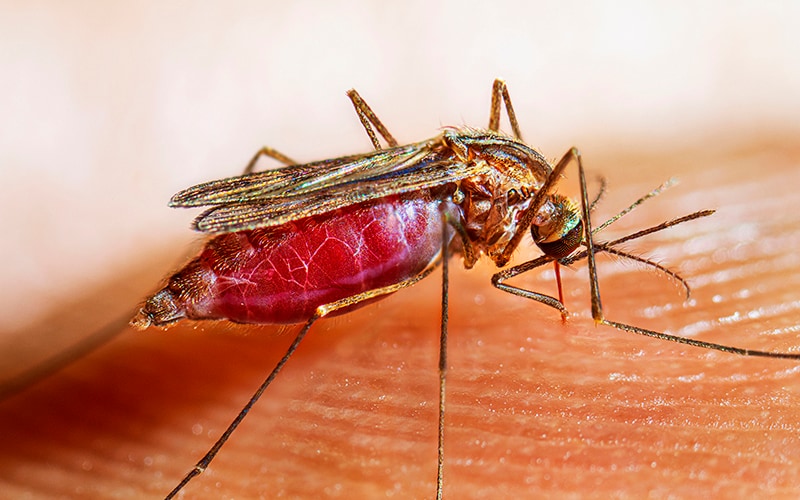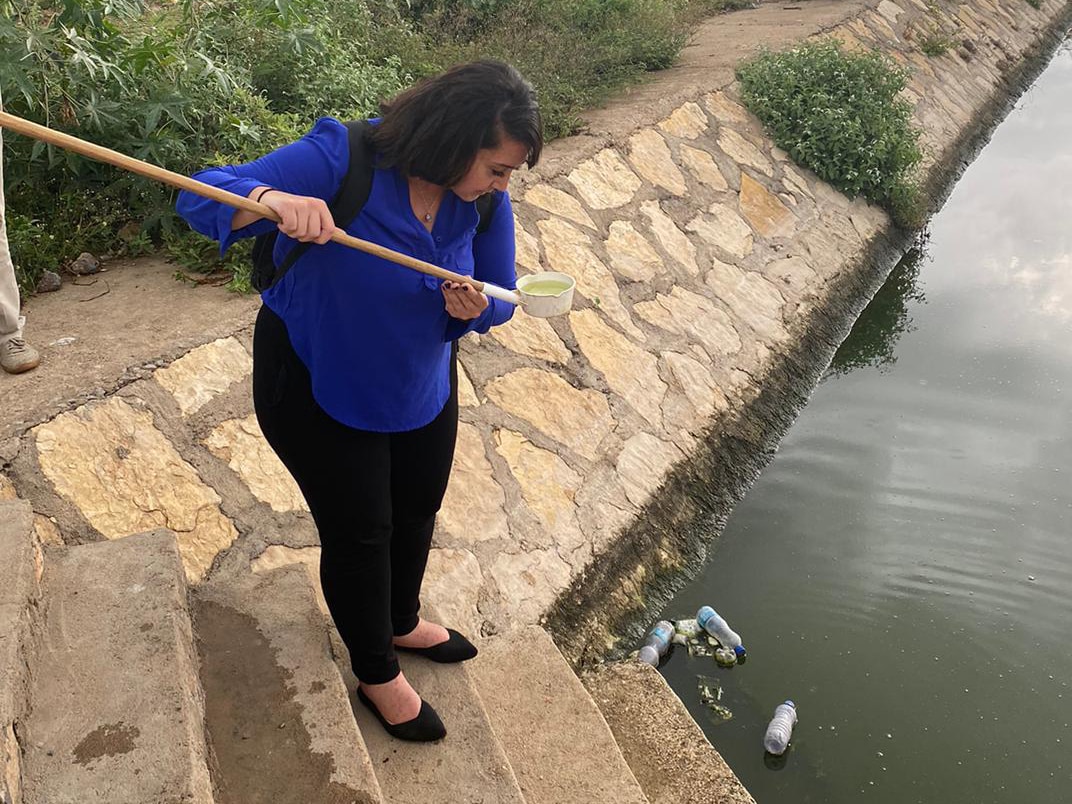Fighting the World’s Deadliest Animal
The small, long-legged insect that annoys, bites, and leaves you with an itchy welt is not just a nuisance―the mosquito is the world’s deadliest animal. Spreading diseases like malaria, dengue, West Nile, yellow fever, Zika, chikungunya, and lymphatic filariasis, the mosquito kills more people than any other creature in the world. CDC is committed to providing scientific leadership in fighting these diseases, at home and around the world.
The most common mosquito-borne disease in the continental United States is West Nile virus (WNV). On average, there are 2,400 reported cases each year. The largest WNV outbreak in the United States occurred in 2021 in Maricopa County, Arizona, sickening 1,715 people, including 125 deaths.

Female Anopheles quadrimaculatus mosquito
Dengue outbreaks occur in many countries around the world, including in the Americas, Africa, the Middle East, Asia, and the Pacific Islands. Many of these countries are popular destinations for U.S. travelers. In 2019, the United States saw the highest number of travel-associated dengue cases since reporting began in 2010. Additionally, dengue is common in some areas of the United States, such as Puerto Rico and the U.S. Virgin Islands.
Another mosquito-borne disease that occurs in tropical and subtropical areas is chikungunya. In 2023, Paraguay experienced a significant outbreak of this mosquito-borne disease, which can cause long-term joint issues and poses a serious threat to young infants and older adults. More than 115,000 cases have been reported since the outbreak began. Travelers have been infected both in Paraguay and in other countries in the region where the outbreak has spread.
Lymphatic filariasis (LF) is a parasitic disease transmitted through repeated mosquito bites over a period of months. Globally, the World Health Organization estimates that at least 51 million people in 44 countries are infected with LF.
In 2021, 619,000 people died from malaria, and over 247 million became ill across 84 countries. Nearly 3.2 billion people of the world’s population is at risk of this preventable disease.
Since 2000, CDC and partners have saved nearly 12 million lives and prevented over 2 billion malaria infections. CDC co-implements the President’s Malaria Initiative with the U.S. Agency for International Development (USAID) in 24 African partner countries (with plans to expand to three more) and three programs in the Greater Mekong Subregion of Southeast Asia.
CDC helped eliminate malaria as a major public health problem in the United States in the early 1950s. However, in 2023, eight locally acquired, mosquito-transmitted cases of Plasmodium vivax malaria occurred in Florida and Texas for the first time in 20 years. In response to these cases, CDC collaborated with state and local health officials in the two states to provide technical assistance, mosquito testing, human specimen reference testing, and to develop a response plan outlining recommended actions and surveillance efforts. CDC continues to educate clinicians on diagnosis and treatment of malaria and share information with providers, laboratorians, public health authorities, policymakers, and the public through a variety of trainings, tools, and fact sheets.
Today, CDC works to eliminate the global burden of malaria and other mosquito-borne diseases. From conducting research to developing tools and approaches to better prevent, detect, and control mosquito-borne diseases, to mitigating drug and insecticide resistance, to accelerating progress towards disease elimination, CDC scientists are working around the world to protect people from mosquito-borne diseases.

CDC entomologist Dr. Sarah Zohdy in Dire Dawa, Ethiopia conducting larval dips in April 2023. The team was checking for mosquito larvae to verify if the insecticide interventions to control mosquito larvae, or larviciding, for Anopheles stephensi in the area were successful. Photo credit: Meera Venkatesan, USAID
Visit CDC’s Prevent Mosquito Bites webpage to learn how you can protect yourself and your family from these diseases. You can find additional information about mosquitoes and mosquito control on CDC’s Mosquitoes website.